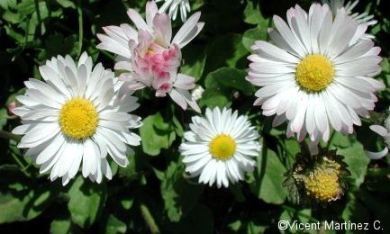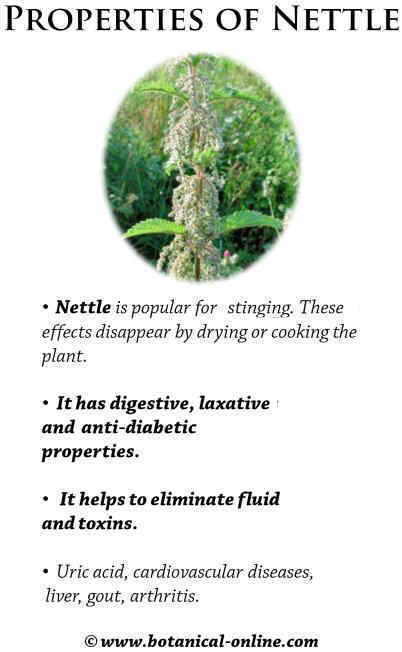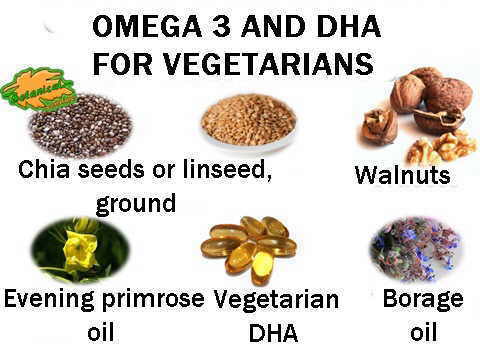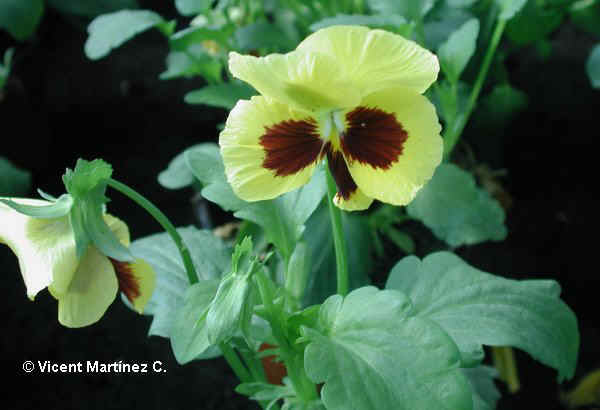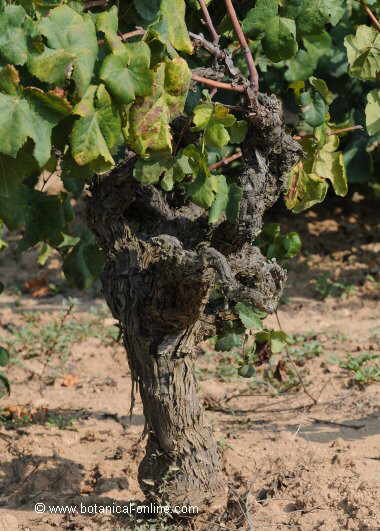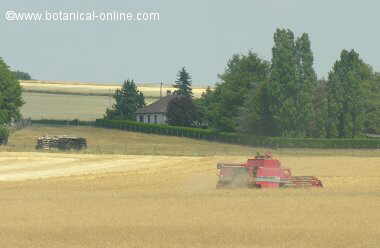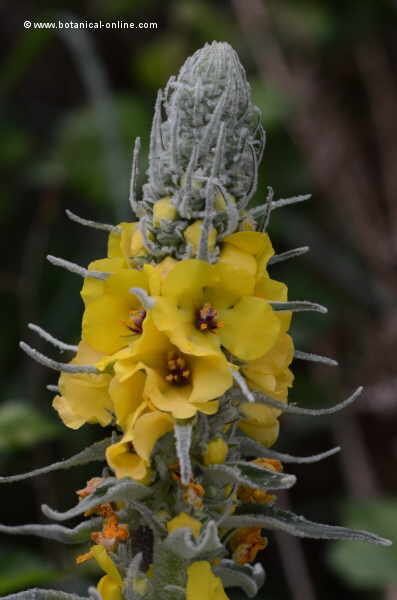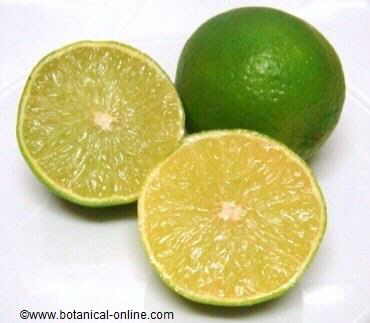Contents
- 1 FOOD USES OF MORINGA
- 1.1 How do you eat moringa?
- 1.2 How to eat moringa leaves
- 1.3 How to eat the legumes or fruits of moringa
- 1.4 How to eat moringa flowers
- 1.5 How to eat moringa seeds
- 1.6 How to eat moringa root
- 1.7 FOOD PROPERTIES OF MORINGA
- 1.8 Benefits of the leaves of moringa
- 1.9 Nutritional value of moringa
- 1.10 Moringa leaves are rich in vitamin A
- 1.11 The leaves of moringa are rich in vitamin B
- 1.12 The leaves of moringa contain a lot of vitamin C
- 1.13 The leaves of moringa contain more calcium than milk
- 1.14 Moringa leaves are very rich in potassium
- 1.15 Dry leaves of moringa have more iron than spinach
- 1.16 A lot of proteins in the leaves of moringa
- 1.17 Fruits or legumes of moringa
FOOD USES OF MORINGA
How do you eat moringa?
Moringa is a plant almost entirely edible. From it, you can eat the leaves, the seeds, the legumes, the flowers and the root.
How to eat moringa leaves
Moringa leaves can be eaten raw or cooked, like a vegetable. In addition, they can be dried, powdered and stored. Preserved in this way, they manage to maintain all their nutritional properties.
Raw moringa leaves have a sharp taste reminiscent of watercress or radish.
When they are cooked, the pungent taste disappears and the leaves acquire a flavor like spinach marinated with pecans.
The fresh moringa leaves or the dry powder from the moringa leaves are added to dishes a couple of minutes before finishing the cooking. If we add it before, we will destroy most of its properties.
How to eat the legumes or fruits of moringa
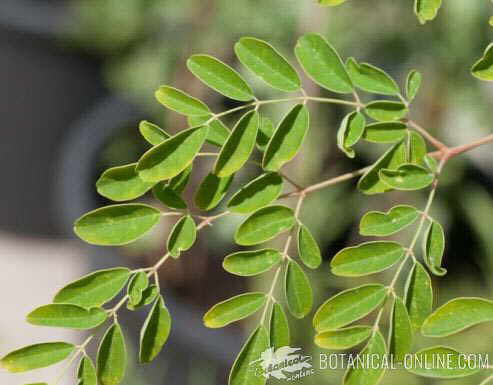
Moringa leaves
Legumes or pods are the fruits of the moringa within which seeds are found. They are more tender and less fibrous when they are not ripe, although mature ones can also be eaten, provided they are cooked well.
When they are tender and the size of green beans, they can be eaten raw or cooked.
When they are adult, they taste like asparagus.
With the pods of the moringa we can prepare any dish that we would prepare as if they were green beans.
How to eat moringa flowers
They can be eaten cooked with a taste similar to mushrooms.
Raw flowers are believed to be toxic. When they are eating too much (more than one cup of coffee per session), they have laxative properties.
Pregnant women should not eat moringa flowers because they are believed to be abortifacient.
They can be added to salads, pasta dishes, cereal dishes, tortilla, lasagna, pizza, mayonnaise, etc.
How to eat moringa seeds
Oil is extracted from moringa seeds (Ben oil), which is used for the lubrication of machinery, as hair grease, in perfumery and, especially in what we are now interested in, as an oil to eat raw, especially in salads.
Moringa seeds are also eaten as if they were peas when the fruits are ripe, or are roasted and eaten as nuts. They are especially rich in vitamin C.
The experience of some users is that we can not eat more than 2 or 3 a day, since they are vomiting, especially if the body is not accustomed. For this, they advise eating one or two and check how the body reacts.
How to eat moringa root
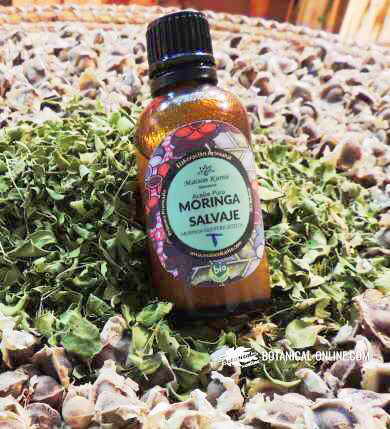
Moringa oil and seeds
It is eaten crushed as if it were a spice to flavor food. It is especially rich in polyphenols. Its pungent taste is similar to that of horseradish (Armoracia rusticana)
To make this spice, remove the bark from the root, grind the rest and add vinegar and salt.
The bark of the root must be eliminated because it is rich in moringine alkaloid, a component similar to ephedrine that presents paralyzing functions of the nervous system, being able to affect the organs or the muscles
Attention !!!: Some specialists consider that this root should not be eaten because, although we remove the bark, the rest of it contains the alkaloid spiraquine with paralyzing effects.
When the dose taken exceeds the tolerated amount it causes the paralysis of the nervous system that can lead to death.
Proponents of this preparation argue that, taken in small doses, it is not dangerous.
FOOD PROPERTIES OF MORINGA
Benefits of the leaves of moringa
In Senegal, a series of experiments were carried out on pregnant or nursing malnourished women and their children and fetuses under the same conditions. For a while, a dust of dried and crushed moringa leaves was added to the meals that these people habitually prepared.
In this experiment it was verified that the children increased of weight and become healthier in general. It was found that women recovered from anemia and that, in childbirth, they presented babies with a greater weight. It was also found that lactating women increased milk production.
The reason for all these changes is due to the richness of the moringa in nutrients, especially when it comes to vitamins, minerals and proteins.
- The leaves of moringa constitute the most nutritious part of this plant.
- The main nutrients of the leaves of the moringa are vitamins A, B, C and in addition they are also very rich in minerals like calcium, potassium, iron and proteins.
Nutritional value of moringa
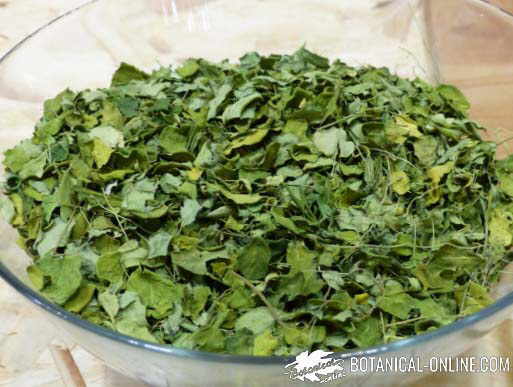
Leaves of Moringa (Moringa oleifera)
At nutritional level, the vitamins and minerals provided by the moringa leaves are:
- They are very rich in protein (27%)
- Rich in fiber (10%)
- High potassium content (1.324 mg / 100g)
- High iron content (30mg / 100g)
- High calcium content (2.000mg / 100g)
- They contribute with vitamin C (17mg / 100g)
- High riboflavin content (20mg / 100g).
Moringa leaves are rich in vitamin A
The leaves of the moringa constitute the most nutritious part of this plant. The leaves of the moringa are the vegetable food richest in vitamin A (in the form of beta-carotene) when compared to other foods rich in vitamin A. For example, the fresh leaves of the moringa contain 4 times more vitamin A than carrots and the dry leaves of moringa contain up to 10 times more than the carrots.
We know the importance of this vitamin for health. It is necessary to cover the needs of this vitamin so as not to have problems in the vision, to maintain our defenses in good condition, for the health of the skin and the digestive membranes, for pregnancy, for breastfeeding or growth and as an antioxidant.
The leaves of moringa are rich in vitamin B
The leaves of this plant, especially in dry powder, contain high levels of vitamin B, especially rich in thiamine, riboflavin, and niacin.
Vitamin B transforms food into energy; Strengthens the immune system; Keeps the mind, nervous system, arteries, or heart in good condition. The lack of thiamine, for example, results in problems of memory and concentration, fatigue and apathy.
The lack of niacin, among other problems, leads to pellagra, a disease virtually eradicated in the West but still very frequent in Asia and Africa and in places where this plant grows, whose use could help eradicate it.
The leaves of moringa contain a lot of vitamin C
Fresh leaves of moringa contain up to 7 times more vitamin C than oranges. The content of this vitamin diminishes when drying the leaves but, still, its content is half of that of the oranges.
Eating the leaves of this plant will help cover the needs of this vitamin whose deficiencies can cause so many health problems. Antioxidant by nature, vitamin C helps neutralize free radicals and their negative manifestations in the skin (wrinkles, spots, flaccidity, etc.) in the eyes (tired sight, night blindness, cataracts, etc.), in the blood vessels (atherosclerosis , cholesterol, etc.) or in the bones and joints (osteoporosis, arthritis, etc.)
Nor should we forget the role of vitamin C in the recovery of patients from bacterial diseases, their importance as a reinforcer of the defenses and as a preventive of the development of cancerous tumors.
The leaves of moringa contain more calcium than milk
The fresh leaves of moringa contain four times more calcium than milk and the dry leaves of this plant contain 17 times more calcium than milk.
This mineral is essential for the development and maintenance of bones. Calcium deficiencies are responsible for cases of osteoporosis, problems of hypertension, cramps in the legs, etc.
Moringa leaves are very rich in potassium
If bananas are famous for their potassium content, the leaves of the moringa outnumber this fruit in this mineral. The fresh leaves of the moringa contain up to 3 times more potassium than bananas and dry leaves up to 15 times more.
Potassium is needed to remove excessive sodium from the body, preventing fluid retention. It is necessary for good health of the heart and kidneys.
Dry leaves of moringa have more iron than spinach
Although the fresh leaves of the moringa contain half the iron than the spinach, the dry leaves far exceed it with a value up to 17 times higher. This fact is very important because, in areas where this plant grows, people often have problems with anemia due to low levels of iron since they eat very little meat.
Adding dry moringa leaves powder to soups or other dishes will help prevent this disease.
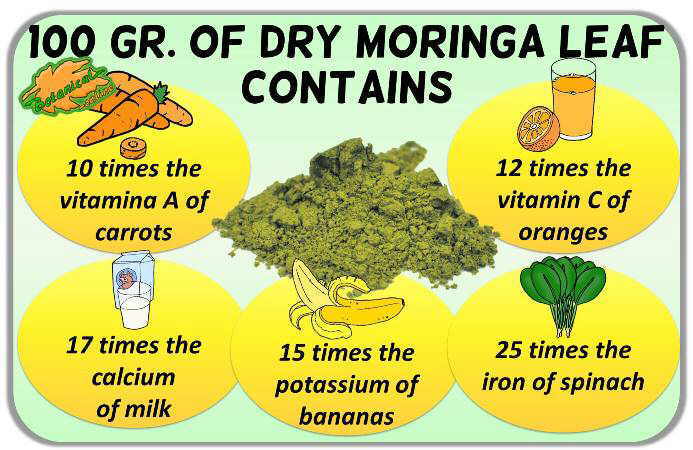
Nutritional properties of dried moringa leaves. They are rich in protein (27%), fiber (10%), potassium (1.324 mg / 100g), iron (30mg / 100g), calcium (2,000mg / 100g), vitamin C (17mg / 100g), vitamin A (20mg / 100g) and riboflavin (20mg / 100g).
A lot of proteins in the leaves of moringa
The leaves of moringa are very rich in proteins. These leaves contain all the amino acids in very high amounts. The tender leaves contain the double of protein than yogurt, while the content of the dried leaves is up to 9 times higher.
Proteins of this plant can play a fundamental role in the places where moringa grows since there is a great deficit of animal protein and many of the foods that are eaten do not present complete proteins, that is to say they lack some amino acids.
The seeds, not the leaves, contain the highest proportion of the amino acids methionine and cysteine, in similar proportions to milk or eggs. Since legumes are deficient in these amino acids, combining peas or other legumes with moringa seeds helps to form proteins of high biological value.
On the other hand, moringa is free of the inhibitor of trypsin, a reason why this one remains free and can help to digest proteins more easily.
| Composition of moringa leavespor 100 g | ||
| Nutrient | Fresh leaves | Dry leaves |
| Water | 78,66 gr. | – |
| Calories | 92 Kcal | 205 Kcal |
| Fats | 1,70 gr. | 2,3 gr. |
| Carbohydrates | 12,55 gr. | 38,2 gr. |
| Protein | 6,7 gr. | 27,1 gr. |
| Fiber | 0,9 gr. | 9,2 gr. |
| Potassium | 259 mg | 1.324 mg |
| Phosphorus | 70 mg | 204 mg |
| Iron | 0,85 mg | 28,2 mg |
| Sodium | 9 mg | – |
| Calcium | 440 mg | 2.003 mg |
| Zinc | 0,16 mg | 3,29mg |
| Magnesium | 42 mg | 368 mg |
| Vitamin C | 220 mg | 17,3 mg |
| Vitamin A (carotenes) | 6,78 mg | 18,9 mg |
| Pyridoxine (B6) | 0,257 mg | – |
| Thiamin (B1) | 0, 06 mg | 2, 64 mg |
| Riboflavin (B2) | 0,05 mg | 20,5 mg |
| Niacin (B3) | 0,8 mg | 8,2 mg |
| Folic acid (B9) | 40 mcg | – |
Fruits or legumes of moringa
The “legumes” or “pods” of moringa are also eaten tender or dry, being especially recommended to eat them when they are green and tender. They are especially tasty and healthy, they exceed the leaves in their content in vitamin C, in potassium and in fiber.
They have fewer calories than leaves and are a good source of magnesium and manganese.
Medicinal properties of moringa
![]() More information on moringa
More information on moringa


